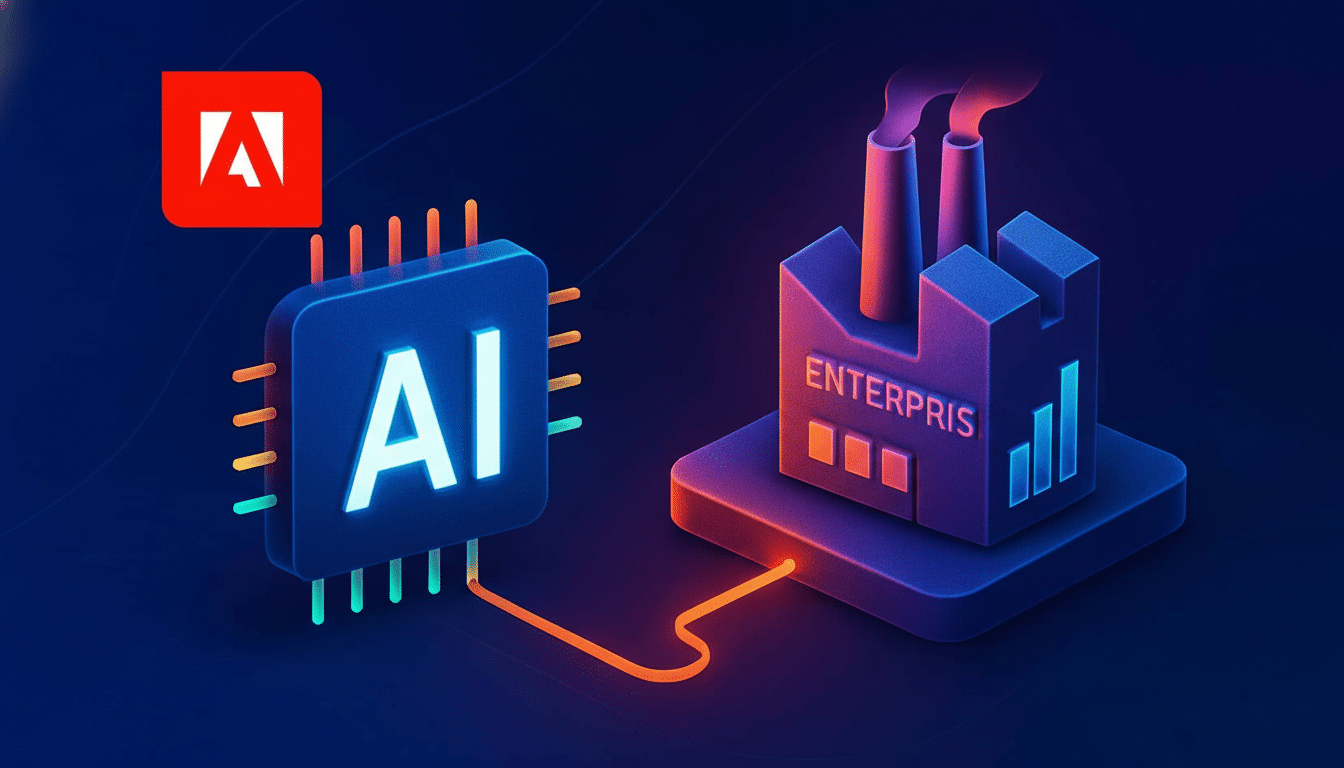And Adobe also launched a new enterprise offering called Adobe AI Foundry, a custom program for creating brand‑specific generative models as part of the company’s broader initiative to bring the power and flexibility of generative AI to text, images, video, and 3D. The offering expands the company’s Firefly model family to enable customer fine‑tuning of proprietary assets, designed to help large organizations level up creative output quickly without compromising brand consistency or control.
In contrast to the seat‑based licensing typical of creative software, AI Foundry is priced on consumption, in recognition of how enterprises are budgeting for AI infrastructure and model inference.

Adobe positions the service as a co‑development engagement: its teams assist with data curation, set guardrails, and model operationalization inside existing creative and marketing workflows.
What the Foundry Actually Provides for Enterprises
AI Foundry at its heart leverages Firefly models which are trained over licensed and rights‑cleared data, and subsequently fine‑tuned using a customer’s brand guidelines, product catalogues, campaign assets, and additional IP. The result: a customer‑controlled model able to produce on‑brand images, copy, and variants by channel — social posts, e‑commerce listings, out‑of‑home signs — with regard for usage.
The service is designed by Adobe to work across photo, video, and 3D scene generation, right out of the gate. It also works with text for headlines or varied product descriptions, according to the company. Most importantly, it comes with enterprise features — service‑level agreements, review options involving humans in the loop, approval workflows, and integration hooks for digital asset management systems.
According to Adobe’s own stats, Firefly has been used by businesses to generate over 25 billion assets since it launched in 2023. The foundry hopes to turn that widespread adoption into another set of (broader, brand‑specific) actual deployments where that output isn’t just good, it’s measurably consistent with overall corporate standards.
The Reasons Enterprises Want Custom Models
Models that aren’t flesh and blood are fast, but they’re also not fluent in a brand’s tone of voice, color systems, product detail or the regulatory do’s and don’ts. For international marketers, the pain manifests in versioning: one master idea trying to scale across dozens of countries, languages, seasons, formats and retail partners. One possibility, of course, is a custom model could do all that long tail with guardrails — one campaign generated as compliant, multilingual variations in hours rather than weeks.
Analysts expect enterprise adoption of this to be swift. The research firm Gartner predicts that 90 percent of businesses will apply generative AI to production by next year, and the global market intelligence company IDC forecasts that spending on generative models worldwide will exceed $140 billion in 2027. That money is increasingly being spent on systems that are tuned to the domain, not generic models.
Technically, the foundry model leverages fine‑tuning + retrieval to bring in approved assets and messaging into the prompt, thus limiting hallucination/off‑brand prompts rather than pure ab initio generation.

That means creative teams have fewer revision cycles and less manual policing of style, typography, and claims.
Governance, Provenance, and IP Safety Considerations
Brand safety is a central pitch. Firefly was trained using licensed data, and the foundry option pools customer data to isolate it for fine‑tuning so that it does not get mixed into training general models. Content Credentials — endorsed by the Coalition for Content Provenance and Authenticity — could be recorded in order to reveal when AI was applied, ensuring traceability throughout the asset lifespan.
For legal and compliance teams this is significant as regulations evolve. The EU AI Act, the U.S. executive order on AI and growing state rules are all driving companies toward auditable model governance. Look for the foundry to be judged not just on output quality, but also its ability to track data lineage, enforce usage constraints and align with policies for approvals and retention.
How It Stacks Up Against Rival Platforms
Big clouds already provide build‑your‑own stacks — AWS Bedrock, Google Vertex AI and Azure AI Studio — as do model providers with custom programs. Adobe’s advantage is that it’s close to creative work: Firefly sits throughout Creative Cloud and its marketing tools and Adobe runs a huge licensed library of content. That gives it a quality response to one of our familiar procurement questions: where did the training data come from, and can we show that?
The strategic bet is workflow gravity. If the design tools, asset library and brand‑tuned model all come from the same vendor, enterprises can consolidate vendors and minimize handoffs. Rivals will respond with more options in models and infrastructure freedom, but Adobe’s deep integration could appeal to creative operations teams that are evaluated on throughput and on‑brand success.
Early Use Cases and the Anticipated Enterprise Impact
Seasonal campaign variants can be produced for thousands of SKUs with automatically localized messaging and price points that reflect cultural differences. It enables automakers to create configurator imagery in new trims and colorways without resorting to the time‑sucking setups of shooting a fresh round of photos. In those highly regulated areas, copywriting prompts can be limited to authorized claims, ensuring that non‑compliant copy doesn’t go anywhere near the market.
Success will be measured in time‑to‑market, asset reuse, and compliance pass rates. The most successful deployments augment the model with strong metadata, a clean product information backbone and rigorous prompt governance — transforming generative AI from novelty to repeatable, brand content factory.
The Bottom Line on Adobe’s Enterprise AI Foundry
AI Foundry is a signal of Adobe’s intention to compete not just on creative tools but also on enterprise AI platforms. With a consumption pricing model, provenance capabilities and brand‑tuned models, the company is hoping to take aim at budgets that have moved from experimental to scaled implementations. Should Adobe be able to translate Firefly’s wide readership into governed, high‑ROI programs, it will establish a benchmark for how custom generative AI ought to be constructed — and measured — within the modern marketing stack.

